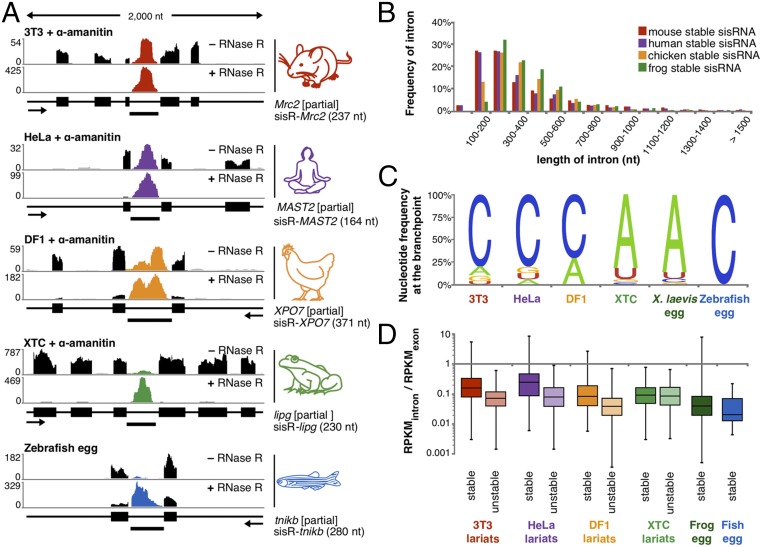Fig. 2.
Identification of lariat RNAs in five vertebrate species. (A) A typical prominent sisRNA detected in cultured cells of mouse (red), human (purple), chicken (orange), and frog (green) and zebrafish eggs (blue). RNase R was used to eliminate mRNA transcripts (black). Transcript annotation and orientation are shown below the coverage for each gene. (B) Percent of stable circular RNAs as a function of intron length (50-nt bins). Mouse (red), human (purple), chicken (orange), frog (green), and zebrafish (blue) sisRNAs derive from short introns. (C) Nucleotide frequency at the branchpoint of stable lariats. (D) Abundance of “stable” and “unstable” circular intronic RNA relative to their cognate mRNA in untreated cells.

